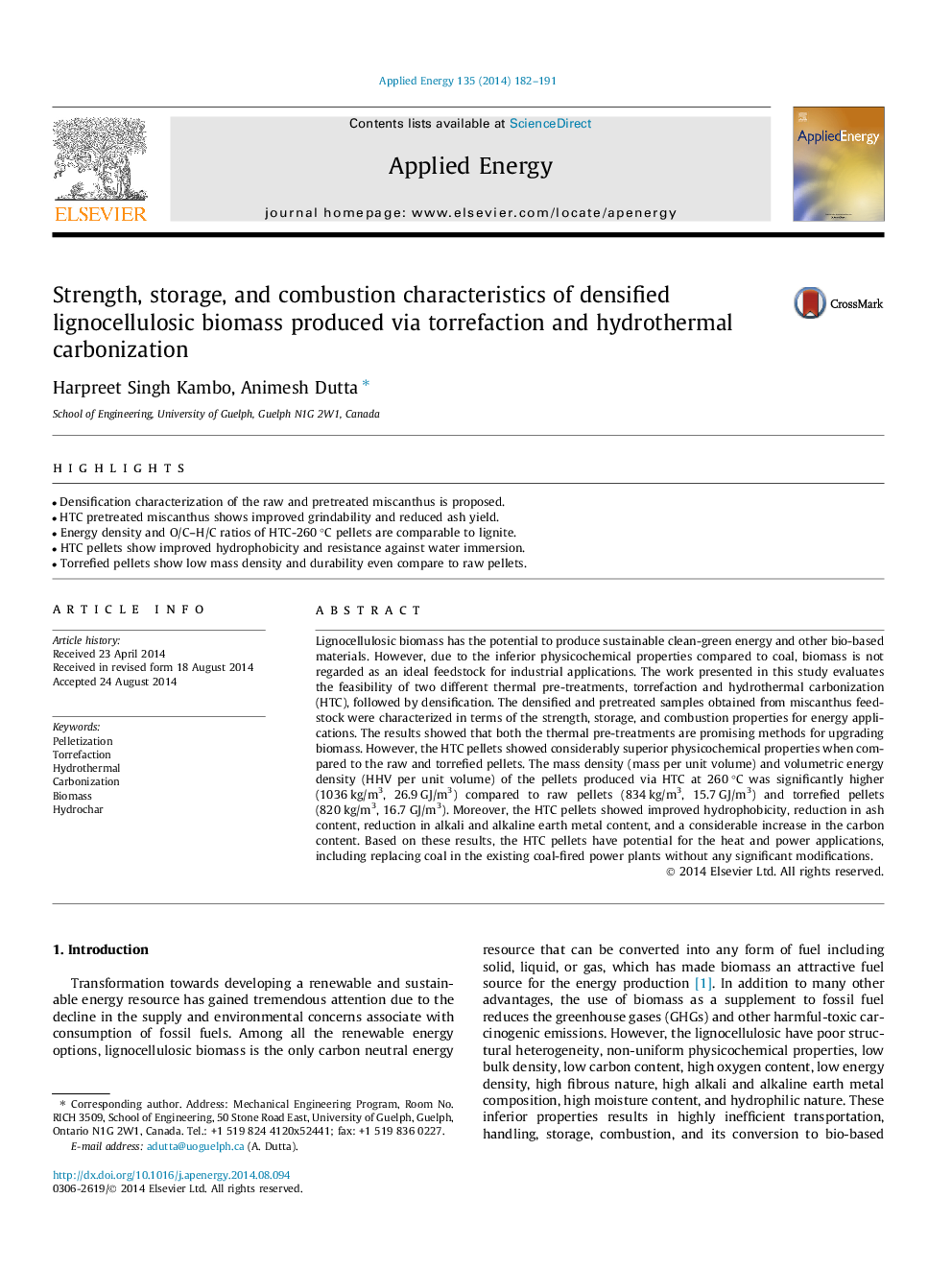| Article ID | Journal | Published Year | Pages | File Type |
|---|---|---|---|---|
| 6689109 | Applied Energy | 2014 | 10 Pages |
Abstract
Lignocellulosic biomass has the potential to produce sustainable clean-green energy and other bio-based materials. However, due to the inferior physicochemical properties compared to coal, biomass is not regarded as an ideal feedstock for industrial applications. The work presented in this study evaluates the feasibility of two different thermal pre-treatments, torrefaction and hydrothermal carbonization (HTC), followed by densification. The densified and pretreated samples obtained from miscanthus feedstock were characterized in terms of the strength, storage, and combustion properties for energy applications. The results showed that both the thermal pre-treatments are promising methods for upgrading biomass. However, the HTC pellets showed considerably superior physicochemical properties when compared to the raw and torrefied pellets. The mass density (mass per unit volume) and volumetric energy density (HHV per unit volume) of the pellets produced via HTC at 260 °C was significantly higher (1036 kg/m3, 26.9 GJ/m3) compared to raw pellets (834 kg/m3, 15.7 GJ/m3) and torrefied pellets (820 kg/m3, 16.7 GJ/m3). Moreover, the HTC pellets showed improved hydrophobicity, reduction in ash content, reduction in alkali and alkaline earth metal content, and a considerable increase in the carbon content. Based on these results, the HTC pellets have potential for the heat and power applications, including replacing coal in the existing coal-fired power plants without any significant modifications.
Related Topics
Physical Sciences and Engineering
Energy
Energy Engineering and Power Technology
Authors
Harpreet Singh Kambo, Animesh Dutta,
